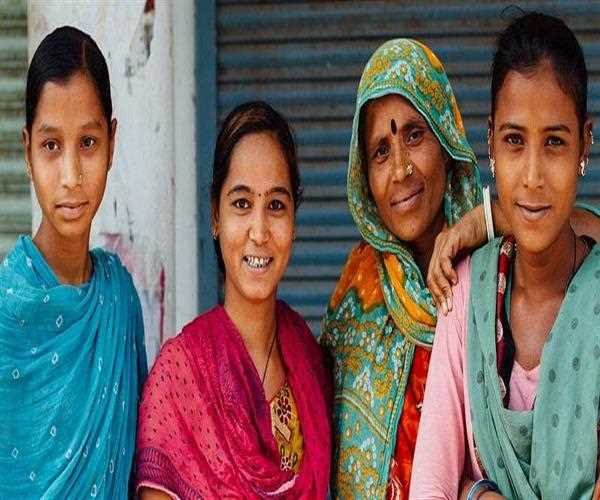Search here

04-Dec-2021
Is it true that India has a greater number of ladies than men?
Each of the three radical findings is remembered for the synopsis discoveries of the fifth round of the National Family and Health Survey (NFHS), which was declared on November 24 by the Union wellbeing service.
The extent of the populace younger than 15 has diminished from 34.9 percent in 2005-06 to 26.5 percent in 2019-21.
India today has 1,020 ladies for every 1000 men, isn't getting any more youthful, and is not generally undermined by populace development.
Each of the three stunning disclosures is remembered for the synopsis discoveries of the fifth round of the National Family and Health Survey (NFHS), which was declared on November 24 by the Union wellbeing service.
Honestly, the NFHS is an example review, and regardless of whether these numbers apply to the whole populace still up in the air with certainty when the following public registration is done, though, on account of many states and Union domains, all things considered, they will.
The measurements show that India is presently not a nation of 'missing ladies,' an expression authored by Nobel Laureate business analyst Amartya Sen in a 1990 paper distributed in the New York Review of Books.
Read More- ARE WOMEN's SAFE IN PUBLIC TRANSPORT?
In India at that point, there were 927 ladies for every 1,000 men. As per NFHS-3, which was acted in 2005-06, the proportion was equivalent, 1000:1000; be that as it may, in 2015-16, the proportion was diminished to 991:1000 in NFHS-4. This is the initial occasion when the sex proportion has been slanted for ladies in either NFHS or Census.
'The further developed sex proportion and sex proportion upon entering the world is likewise a huge accomplishment; despite the fact that the genuine picture will rise up out of the registration, we can say for the time being that our actions for ladies strengthening have guided us the correct way,' said Vikas Sheel, extra secretary, Union Ministry of Health and Family Welfare and mission chief, National Health Mission.
Certainly, the sex proportion upon entering the world for youngsters brought into the world over the most recent five years is as yet 929, suggesting that child inclination, in its different horrifying structures, perseveres, yet the sex proportion is a huge achievement accomplished because of approaches pointed toward checking once-uncontrolled sex determination practices and female child murder, just as the way that ladies in India live longer than men.
As per information from the Census of India site, the normal future upon entering the world for guys and ladies in 2010-14 was 66.4 years and 69.6 years, separately.
Other captivating study results can be viewed here.
The extent of the populace younger than 15 has diminished from 34.9 percent in 2005-06 to 26.5 percent in 2019-21. India is as yet a youthful country, with a middle-age of 24 years of age in 2011, as per Census information, however, it is maturing, which carries with it strategy concerns.
'Since we are presently a maturing populace, our way to deal with ladies' wellbeing requires a more comprehensive life cycle view rather than one that focuses on conceptive wellbeing exclusively,' said Yamini Aiyar, leader of the Center for Policy Research.
Read More- The fate of Afghan women under Taliban
At last, India's absolute fruitfulness rate (TFR), or the normal number of youngsters per lady, is right now just 2, well beneath the globally perceived substitution level ripeness rate (where a populace impeccably replaces itself from one age to another) of 2.1.
This infers that India's populace might have crested – one more information point that must be dictated by the Census, yet which is presumably valid for at minimum the southern states, just as a portion of the more well-off ones.
Certainly, ensuing NFHS adjusts have extended their inclusion as far as both example size and the number of markers on which information is gathered.
Regardless of the public authority's cases that no less than two of its strategic level projects have prevailed with regards to killing open poo and guaranteeing a change to clean fuel, holes endure on the two fronts: 70.2 percent and 58.6 percent of families, separately, utilize a further developed sterilization office and clean fuel for cooking.
These figures are by the by altogether higher than those from the last round of the review, at 48.5 percent and 43.8 percent, separately.
Different drives, for example, monetary consideration and health care coverage inclusion, seem to have been fruitful.
The extent of ladies with a ledger that they use expanded from 53% in NFHS-4 to 78.6 percent in NFHS-5. Also, between NFHS-4 and NFHS-5, health care coverage inclusion moved from 28.7 percent to 41 percent (the NFHS-5 might not have covered the whole gains of the focal government's health care coverage program, as indicated by the service).
Read My other views as well-
Why is Mental Health Important for Students?
Useful Ways to Improve your Emotional Well-Being

Student
I can help you with the following writing services- 📌 SEO friendly content 📌 Articles 📌 Blog 📌 Social media content 📌 Copywriting 📌 Marketing content 📌 Optimum research on the content 📌 Proofreading and Editing 📌 Product descriptions 📌 Email writing 📌 I provide lucrative content strategies that differentiate your business from the rest of the competition.
Join Our Newsletter
Subscribe to our newsletter to receive emails about new views posts, releases and updates.
Copyright 2010 - 2025 MindStick Software Pvt. Ltd. All Rights Reserved Privacy Policy | Terms & Conditions | Cookie Policy